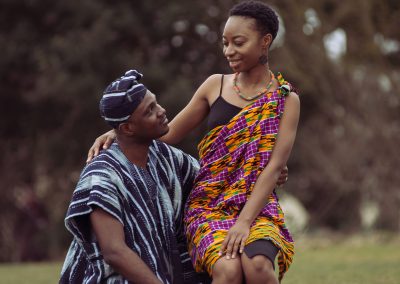London Exhibition Showcases Africa’s Rich Fabric Diversity
By Cyril Okonkwo, Abuja
A photo exhibition, which showcases and celebrates Africa’s identity and diversity through the continent’s different indigenous fabrics and textiles, will begin at the Africa Centre in London on Friday
Tagged “Not A Country,” the weeklong exhibition is created to correct the wrong notion that Africa is a just a country as most people outside the continent think.
It is the brain child of Tunde Alabi-Hudeyin II, a Nigerian documentary photographer and documentary filmmaker.
He described his work as one that “investigates the colonial gaze on the Black body, ethically explores human conditions in marginalised communities, and disrupts existing hierarchies of power relations.”

Alabi-Hundeyin’s work has been exhibited across Africa, Europe, and North America, and he has worked on projects for global charities and corporate organisations.
The project began in 2018 and for the past six years it has been at many exhibition spaces.
Mr. Alabi-Hundeyin told Voice of Nigeria in a telephone interview that the exhibition was held last year at the Brighton Fringe Festival, and was seen by over 30,000 people within 10 days.
He said; “Africa is a beautiful continent and, basically, I created this work to argue about the fact that Africa is not a country because for some time now I’ve been living in the United Kingdom and usually when the West wants to talk about us; maybe they are referring to a particular tribe or country, they just say Africa. Something like I’m going to Africa instead of specifically that I’m going to Nigeria or I’m going to South Africa.
“I try to use our textiles as a form of material culture, a form of symbolism to show Africa’s diversity. The exhibition, the body of work interrogates the influence of colonialism, capitalism, religion and you can also say globalisation on our traditional attires.”
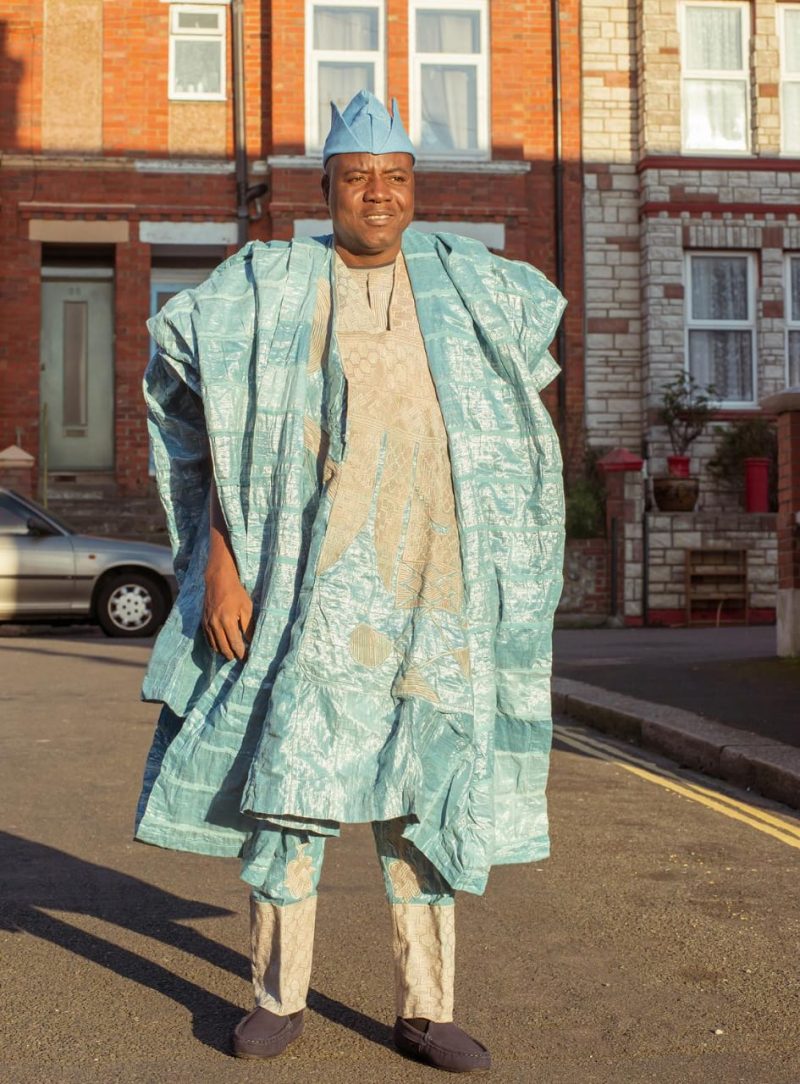
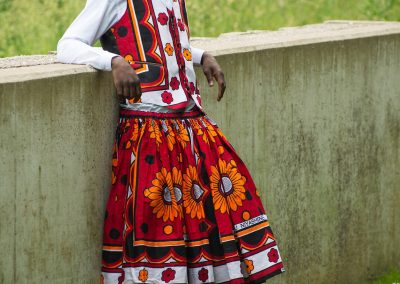
“I tried to flip the colonial suppression by placing the colourfully adorned black body within the British landscape, which is a representation of the colonial metropole.
“I’ve been taking it around different places in the last number of years. I intend to take it outside of Europe in the next couple of years so that more people will get to know more about it and it would educate and inform them,” Mr. Alabi-Hundeyin said.
Explaining that his findings have shown that some countries in Africa do not have national attires, he said that “colonial influence made those countries lose part of their cultural heritage which they have not been able to recover.”
“In this project I’ve worked with people from 20 different African countries. I was shocked to realize that Zimbabwe doesn’t have a national attire.
“When I prodded further I was told that during the colonial period they had a red, black and white attire that had chevrons that represent the different sites and monuments in Zimbabwe.
“They were won by powerful people, tradesmen, by hunters, by musicians, by goldsmiths and by traditional healers,”Mr. Alabi-Hundeyin said.
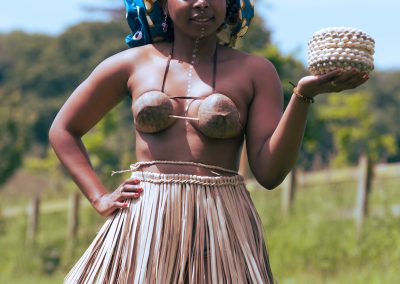
He further said; “Infact traditional healers would not go ahead with their work without this attire. But this attire angered the colonizers; so they would censor them; they would suppress and criminalise the people for wearing these traditional symbols of power.
“Because of that in those days people had to stop wearing the cloth because it was criminal for you to wear it.
“So, that’s why Zimbabwe’s post-colonial era there is no traditional cloth that they wear; they all wear western clothes; and that’s the influence of colonialism and globalization on the traditional systems of people’s appearance in Zimbabwe as an example.
“We can also use Egypt as an example. In Egypt, the Egyptians have abandoned their traditional clothing. They now wear Western clothing. These are things that I explore in this photo documentary.”
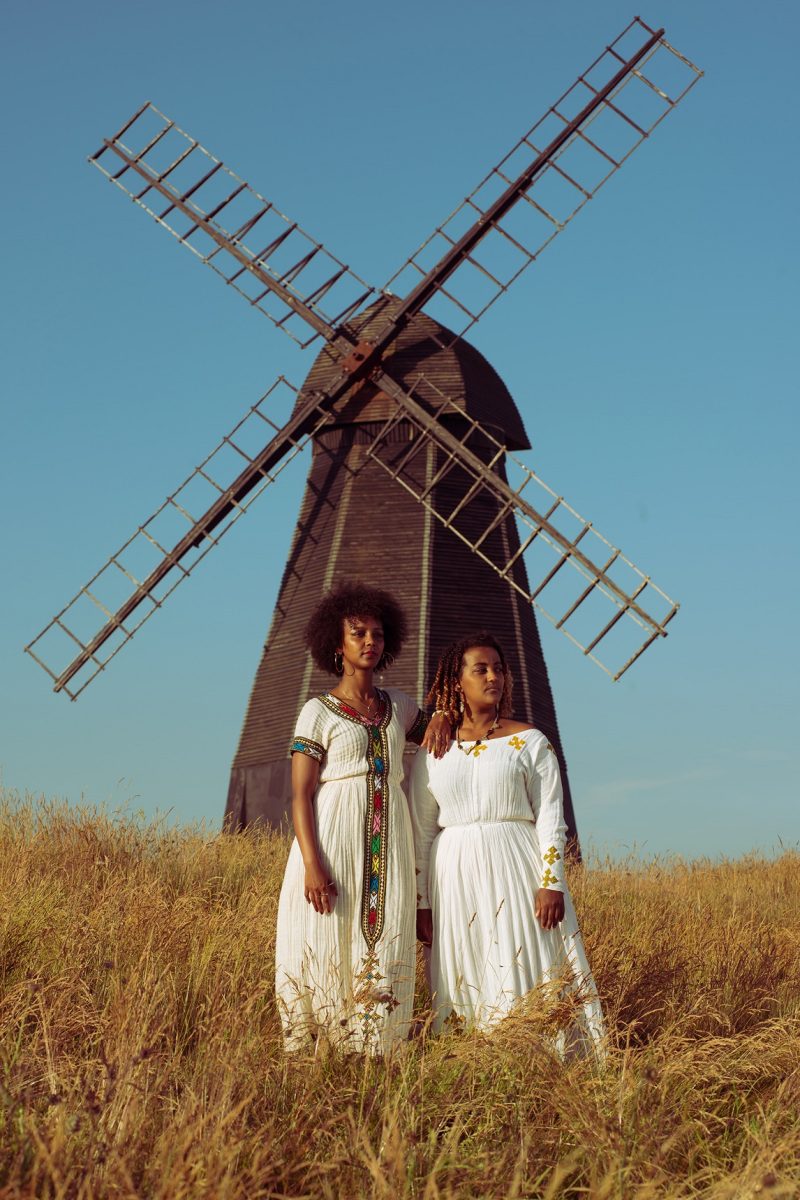
Changing attitude
Mr. Alabi-Hundeyin observed that despite the influence of the media, the attitude of many Africans are changing towards indigenous attires.
He noted that leaders like Nigeria’s former President, Olusegun Obasanjo, did a lot to project the African culture as expressed in their clothing by always adorning African fabrics and attires.
“I would say, using Nigeria as an example, I think that it was during the Obasanjo era that attitude began to change towards traditional clothing and people began to appreciate our traditional fabrics and began to adorn it.
“If you remember, President Obasanjo would wear his adire; would wear ankara. So, attitudes are beginning to change,”Mr. Alabi-Hundeyin stressed.
He added that the insights gleaned from the models he has collaborated with indicate a changing attitude towards indigenous fabrics and attire.
Mercy Chukwudiebere

